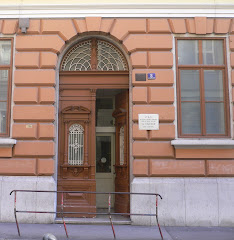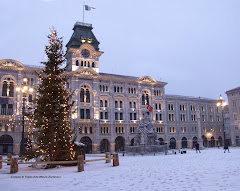The Egg
 Of all the symbols associated with Easter, the egg, is the most identifiable. For thousands of years, people thought of eggs as the symbols of new life. People also thought that the Earth itself hatched from a huge egg. So that is why the egg was chosen as the symbol of the resurrection.
Of all the symbols associated with Easter, the egg, is the most identifiable. For thousands of years, people thought of eggs as the symbols of new life. People also thought that the Earth itself hatched from a huge egg. So that is why the egg was chosen as the symbol of the resurrection.
Long before Jesus, people used to give each other eggs as presents. These eggs were dyed or painted in fancy colours and designs.
Different cultures have developed their own ways of decorating Easter eggs: originally Easter eggs were painted with bright colours to represent the sunlight of spring and were used in Easter-egg rolling contests or given as gifts. After they were colored and etched with various designs the eggs were exchanged by lovers and romantic admirers, much the same as valentines. In medieval time eggs were traditionally given at Easter to the servants.
In Germany and other countries eggs used for cooking where not broken, but the contents were removed by piercing the end of each egg with a needle and blowing the contents into a bowl. The hollow eggs were died and hung from shrubs and trees during the Easter Week. The tradition of making the Easter tree is not old in Italy, but it's now spreading very rapidly, especially in the North. The Easter Tree in the picture for exzmple is my teacher's.
Every culture has different traditions on how to decore the Easter eggs: The Armenians would decorate hollow eggs with pictures of Christ, the Virgin Mary, and other religious designs. In Germany eggs were given to children along with other Easter gifts. In Greece, are exchanged Crimson eggs, to honour the blood of Christ. In parts of Germany and Austria green eggs are used on Maundy Thursday (Holy Thursday). Slavic peoples decorate their eggs in special patterns of gold and silver. From the Ukraine came some of the most elaborate and beautifully designed eggs called Kistka
Pysanki eggs are a masterpiece of skill and workmanship. Melted beeswax is applied to the fresh white egg. It is then dipped in successive baths of dye. After each dip wax is painted over the area where the preceding colour is to remain. Eventually a complex pattern of lines and colours emerges into a work of art.

The Easter Bunny
The Easter bunny has its origin in pre-Christian fertility lore. The Hare and the Rabbit were the most fertile animals known and they served as symbols of the new life during the Spring season.
The bunny as an Easter symbol seems to have it's origins in Germany, where it was first mentioned in German writings in the 1500s. The first edible Easter bunnies were made in Germany during the early 1800s. These were made of pastry and sugar.
 It was introduced to American folklore by the German settlers who arrived in the Pennsylvania Dutch country during the 1700s. The arrival of the "Oschter Haws" was considered "childhood's greatest pleasure" next to a visit from Christ-Kindel on Christmas Eve. The children believed that if they were good the "Oschter Haws" would lay a nest of colored eggs.
It was introduced to American folklore by the German settlers who arrived in the Pennsylvania Dutch country during the 1700s. The arrival of the "Oschter Haws" was considered "childhood's greatest pleasure" next to a visit from Christ-Kindel on Christmas Eve. The children believed that if they were good the "Oschter Haws" would lay a nest of colored eggs. 
Although Italians do not decorate hard–boiled eggs nor have chocolate bunnies or pastel marshmallow chicks, the biggest Easter displays in bars, pastry shops, supermarkets, and especially at chocolateries are brightly wrapped uova di Pasqua—chocolate Easter eggs—.Most of them are made of milk chocolate and all except the tiniest eggs contain a surprise.
The very best eggs are handmade by artisans of chocolate, who offer the service of inserting a surprise supplied by the purchaser. Car keys, engagement rings, and watches are some of the high–end gifts that have been tucked into Italian chocolate eggs in Italy.
Martina (IVB)
 It's a bit late, but my heart is still there! With this meeting the Comenius project is over; it has seen the participation of eight schools from seven different countries: Finland, Norway, Czech Republic, Germany and Italy (both Salerno and Trieste) Guadeloupe and Sweden.
It's a bit late, but my heart is still there! With this meeting the Comenius project is over; it has seen the participation of eight schools from seven different countries: Finland, Norway, Czech Republic, Germany and Italy (both Salerno and Trieste) Guadeloupe and Sweden. language of the Comenius project; in fact during my stay with my host family I only spoke English all the time.
language of the Comenius project; in fact during my stay with my host family I only spoke English all the time.

















.jpg)

